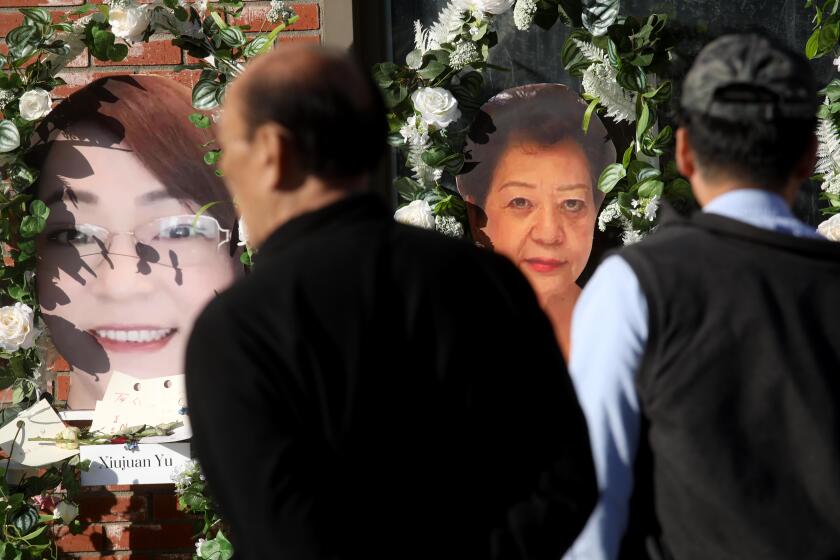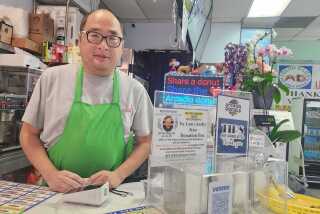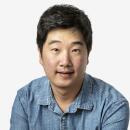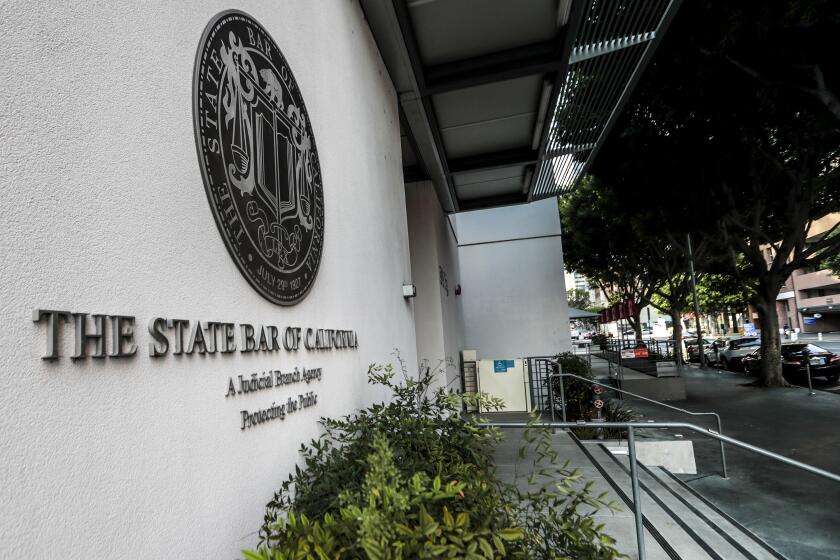Monterey Park shooting survivors dance again in sadness, solidarity: ‘Nothing can kill our spirit’
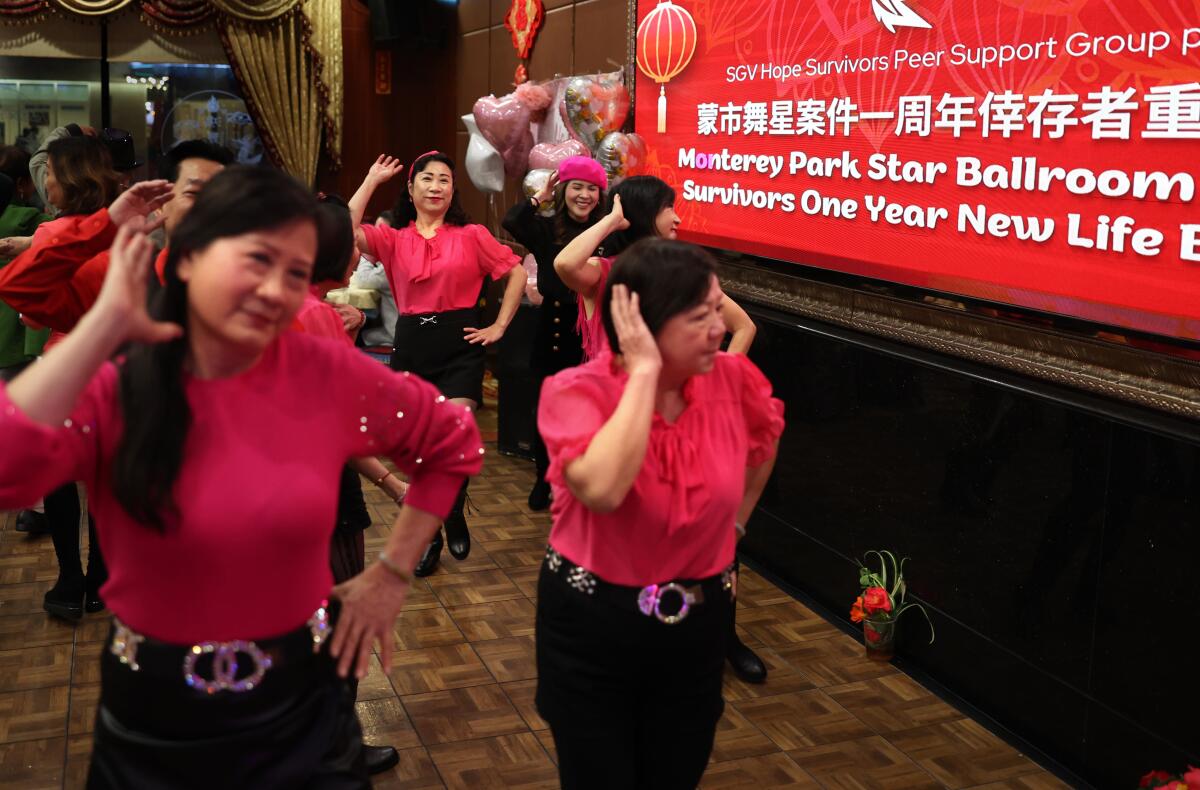
- Share via
Cindy Lao’s line dance was destroyed by gunfire a year ago, but her spirit wasn’t.
On Sunday, the one-year anniversary of the deadliest mass shooting in modern Los Angeles County history, Lao led a small group of people onto a makeshift dance floor at World Seafood Restaurant. The Alhambra eatery was hosting a banquet for survivors of the Monterey Park mass shooting.
“I was fortunate,” said Lao, a dance instructor at Star Ballroom Dance Studio, the site of the massacre. “I feel lucky I can live today. And tonight, I was dancing for the 11 people who left us that evening, with a heavy heart and deep sadness.”
On Jan. 21, 2023, on the eve of Lunar New Year, Star Ballroom was packed with patrons. “The Light Rain in March,” a Chinese song, was playing over the speakers as Lao led a dance near the front entrance. When gunshots erupted, many thought it was celebratory firecrackers, but the awful reality soon became evident. Lao saw a couple drop to the floor before she, too, dove down and hid under a pile of balloons.
Eleven people were killed and nine others injured in the attack.
A year later, Lao and many others who were at Star Ballroom that night, stepped back onto the dance floor, swaying again to the same song.
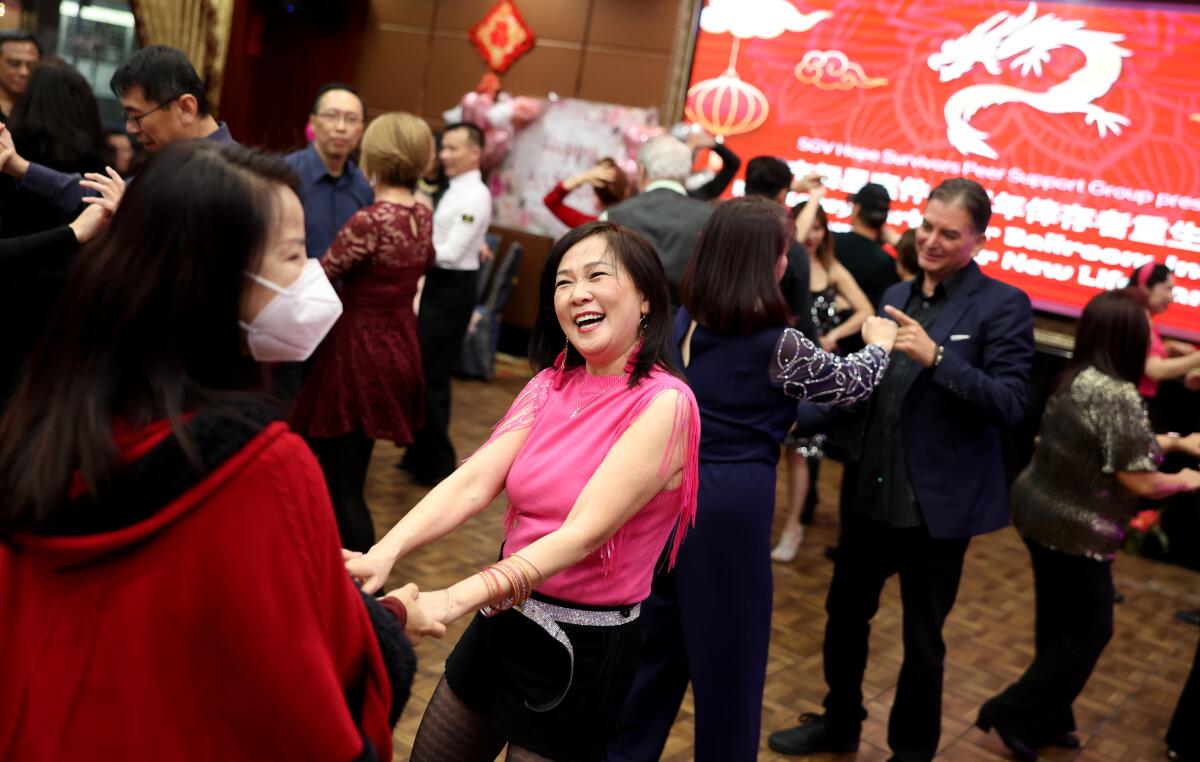
While the shooting left a permanent mark on the mostly Asian enclave, the tragedy also has sparked discussions about mental health among Asian American and Pacific Islanders as well as created a lifelong bond among the 40 or so survivors. Some have channeled their trauma by advocating for gun control reform, while others have found strength in a return to dance.
Lloyd Gock, who survived the shooting, came up with the idea for the 150-person banquet. After the tragedy, Gock formed a support group for survivors, who started meeting regularly to talk about what they were going through.
Gock told himself that if they made it through the year, they would celebrate together.
“Tonight, I’m seeing a lot of people out here who were there that night and are dancing here again,” Gock told the crowd. “That’s the message: Nothing — no gun or anything — else can kill our spirit for dancing.”
Six months after a mass shooting in Monterey Park that left 11 dead, survivors and fellow dancers have come together, forging new relationships.
Across the city, the effects of the tragedy can still be felt a year later. The MPK Hope Resiliency Center in Sierra Vista Park has held more than 300 workshops since it launched in August. The facility will relocate in April to a bigger space on Atlantic Boulevard to accommodate more counseling services, said Peter Ng, CEO of Chinatown Service Center, which runs the operation.
Ahead of the banquet, Ng and 19 other community leaders and local, state and federal officials gathered for a round-table discussion. Dr. Mark Ghaly, secretary of the California Health and Human Services Agency, said the state is investing $50 million to address behavioral health issues, such as isolation and loneliness, among older residents.
“If we are going to have this healing and hope translate into real change for our community, we need to build those tools and support one another,” he said.
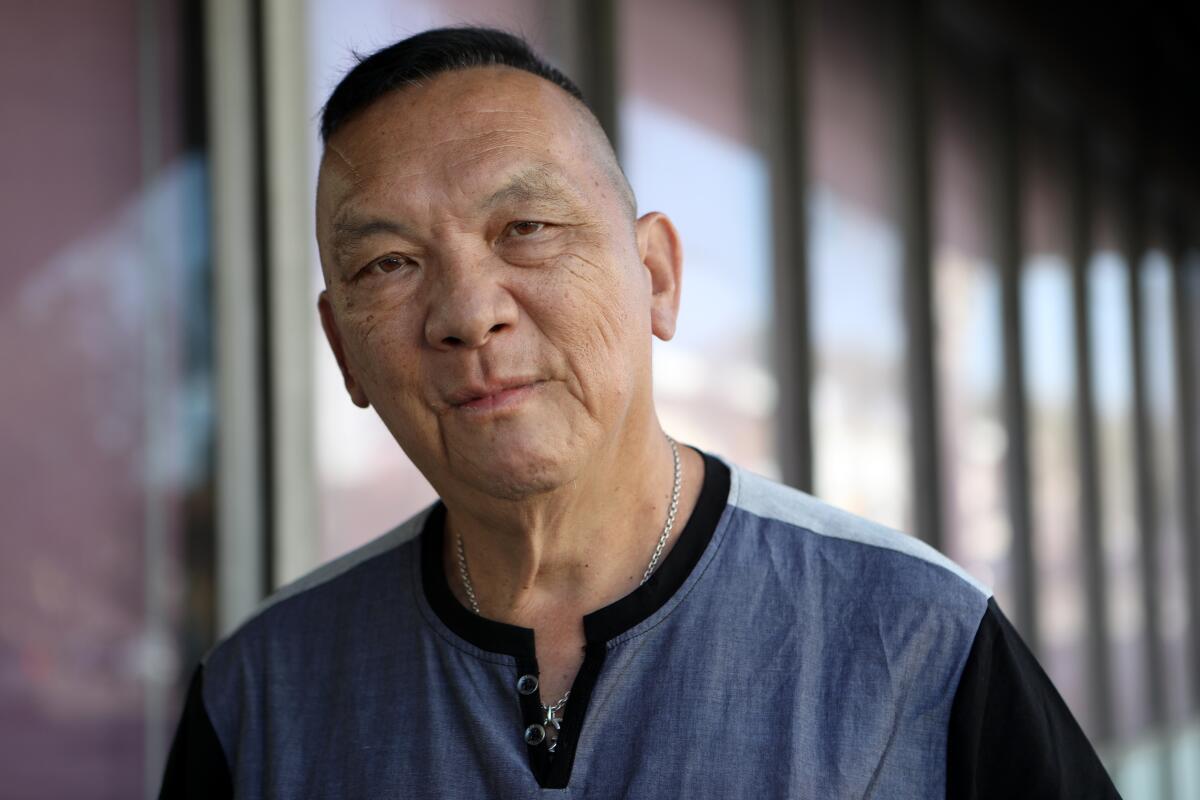
The shooting has also ignited a push for more policies that address gun violence. Monterey Park has since passed a number of ordinances, such as one that restricts where gun dealers can sell weapons.
“This shooter was deteriorating mentally and stockpiling ammunition. I am sure somebody saw it, but in our community, very few immigrants know about the red flag law,” which allows firearms to be removed from those who have been deemed a threat to themselves or others, said Rep. Judy Chu. The legislator’s district includes Monterey Park, and she has introduced a federal bill to provide translation services about the gun control issue.
As a journalist, I knew covering a mass shooting was a matter of when, not if. It never occurred to me that the first one I covered would take place in my community
To honor the victims, officials also held a candlelit vigil at Monterey Park City Hall, where surviving family members chanted the sutras — words of the Buddha — to bring peace and harmony and heaven. Nearby, a neon sign showed a couple dancing above the phrase “United We Dance.”
Kristenne Reidy, whose father, Valentino Alvero, was killed in the shooting, told the crowd gathered on the lawn that for months, she couldn’t stomach going to a party, especially one that involved singing and dancing.
But a few weeks ago at a dinner the city hosted for families of the victims, Reidy ventured onto the dance floor. Her three young daughters came with her.
“I can almost hear my dad say, ‘See Kristenne? It runs in the family,’ ” Reidy said.
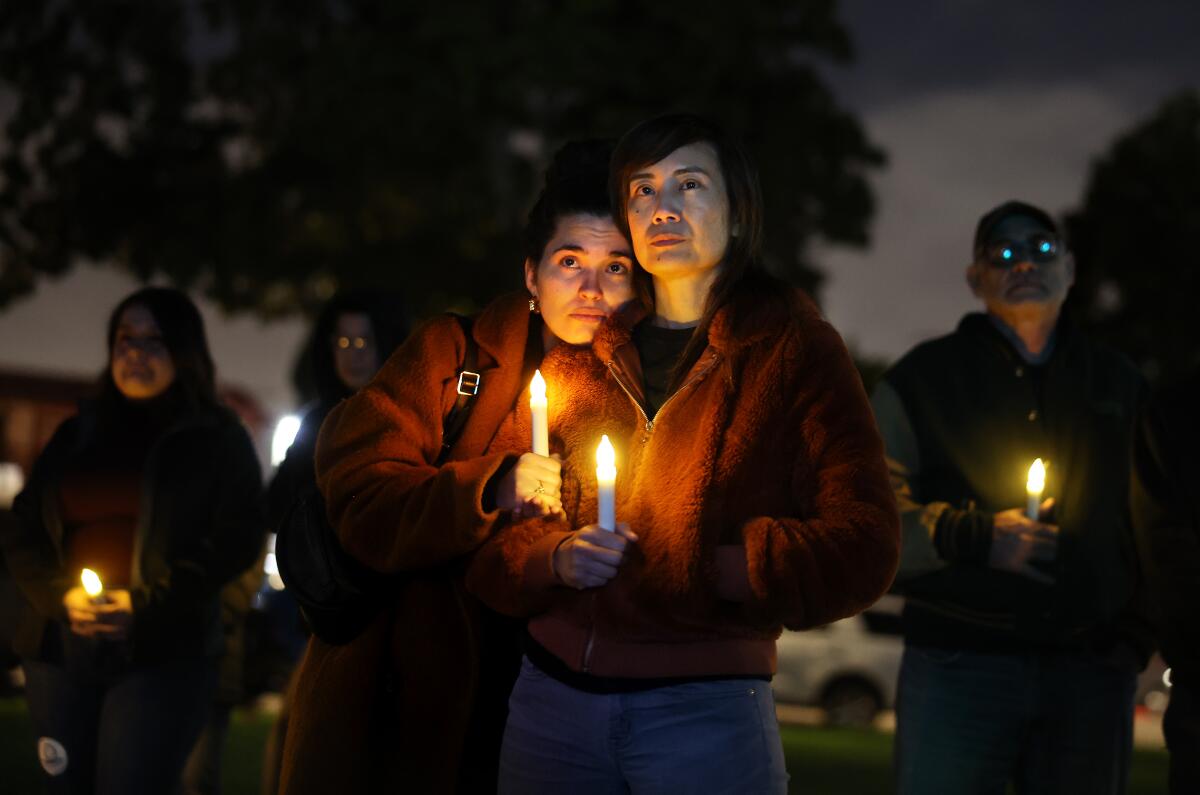
Jim Goodman was dancing near the back of Star Ballroom with Hattie Peng when the shooting started last year. A military veteran and a retired police officer, Goodman quickly pulled Peng down to the floor and shielded her with his body. The attack sent one bullet through Goodman’s left foot and another into his back. Peng was physically unharmed.
After he was shot, Goodman tried to pull another man down to the floor, but he was too weak. He later found out the man, Andy Kao, died in the shooting.
It’s taken nearly a year for Goodman to recover from his injuries. When his doctor finally took the cast off Goodman’s leg and looked at the X-rays, he told him he would never dance again. The bullet had taken out a chunk of bone, and he thought it would be too difficult for Goodman to move on the leg.
“That was his opinion,” Goodman said. “I said to myself even then, ‘I think I’ll be able to dance again.’ That was my opinion.”
On Sunday, the 77-year-old proved his doctor wrong when he danced with Peng at World Seafood Restaurant. He said he doesn’t move as well but it feels good to be back on the dance floor.
“When one thing happens, you just go forward. You don’t go backward. It’s not gonna help you,” he said.

